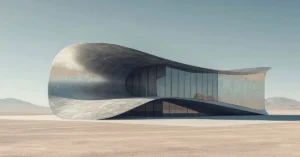Understanding the Master in Architecture Curriculum

Embarking on the journey towards a Master’s in Architecture is a transformative experience, where aspiring architects delve into the intricate world of design, construction, and spatial aesthetics. The curriculum for a Master’s in Architecture program is carefully crafted to equip students with the knowledge, skills, and creativity required to shape the future of built environments. In this comprehensive guide, we will explore the key components that make up the curriculum of a Master’s in Architecture program.
Unveiling the Pinnacle of Architectural Education and Creativity
1. Foundation Courses: Building the Groundwork
The journey begins with foundational courses that lay the groundwork for advanced architectural studies. These courses typically cover architectural history, theory, and basic design principles. Students delve into the evolution of architectural styles, understanding how historical contexts have shaped the built environment. Simultaneously, they explore fundamental design concepts, honing their skills in sketching, modeling, and conceptualization.
2. Advanced Design Studios: Where Creativity Takes Center Stage
One of the core components of a Master’s in Architecture program is the series of advanced design studios. These studios provide students with the opportunity to apply theoretical knowledge to real-world projects. Working on diverse design challenges, students learn to balance creativity with practicality, tackling issues such as sustainability, urban planning, and cultural considerations. Critiques and discussions during these studios foster a collaborative environment, encouraging students to refine their design thinking.
3. Technology Integration: Bridging the Gap Between Design and Execution
As technology continues to reshape the architectural landscape, Master’s in Architecture programs prioritize the integration of cutting-edge tools and technologies. Courses in digital design, Building Information Modeling (BIM), and parametric design enable students to translate their creative visions into tangible plans. Proficiency in software such as AutoCAD, Rhino, and Revit becomes crucial, empowering students to navigate the digital realm of contemporary architecture.
4. Architectural Research and Theory: Unraveling the Intellectual Threads
To produce architects who are not only skilled practitioners but also critical thinkers, Master’s in Architecture programs incorporate courses on research and theory. Students engage in in-depth analyses of architectural movements, contemporary issues, and theoretical frameworks that influence design. These courses foster a deep understanding of the intellectual underpinnings of architecture, encouraging students to question and innovate.
5. Specialization Tracks: Tailoring the Education Journey
Recognizing the diverse interests within the field of architecture, many Master’s programs offer specialization tracks. Whether it’s sustainable design, urban planning, historic preservation, or healthcare architecture, these tracks allow students to tailor their education to align with their passions and career goals. Specialization courses deepen knowledge in specific areas, providing a well-rounded education that meets the demands of a dynamic profession.
6. Professional Practice: Bridging Academia and the Real World
Understanding the practical aspects of architectural practice is vital for emerging architects. Courses in professional practice cover topics such as project management, ethics, legal considerations, and business aspects of running an architectural firm. Guest lectures by practicing architects and site visits offer valuable insights into the day-to-day challenges and responsibilities architects face in the professional arena.
7. Electives and Interdisciplinary Studies: Expanding Horizons
Master’s in Architecture programs often encourage students to explore interdisciplinary studies and take elective courses outside the traditional architectural curriculum. This allows for a broader perspective, fostering connections between architecture and fields such as engineering, environmental science, or even business. The aim is to nurture architects who can think holistically and collaborate across disciplines.
8. Thesis Project: Culmination of Mastery
The pinnacle of a Master’s in Architecture program is the thesis project. This intensive, independent research project allows students to demonstrate their mastery of architectural concepts, design principles, and research methodologies. It is an opportunity for students to contribute to the field, addressing pressing challenges or proposing innovative solutions. The thesis project serves as a portfolio centerpiece, showcasing the depth of a student’s intellectual and creative capabilities.
Conclusion: Crafting Architects for the Future
In conclusion, a Master’s in Architecture curriculum is a carefully curated journey that combines artistic expression, technological proficiency, critical thinking, and practical skills. It molds individuals into architects equipped not only to design structures but also to shape the future of the built environment. Aspiring architects emerge from these programs with a holistic understanding of their craft, ready to leave an indelible mark on the ever-evolving world of architecture.
If you’re interested in learning more about architecture firms in Europe, check out this comprehensive list of the top 50 firms compiled by Archgyan. From innovative startups to long-established industry leaders, this list has it all. Take a look and discover some of the most inspiring and influential architecture firms in Europe today.
If you’re interested in architecture and want to learn more about this amazing field, subscribe to our podcast on youtube
For more SketchUp tutorials, head to https://www.sketchupguru.com













